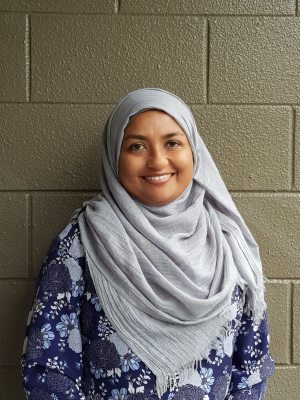Terminology Matters: What Do You Call Your (English) Learners?
English learner. Emergent bilingual. Multilingual learner. ESOL student. Dual language learner. Plurilingual learner. If you are in the field of educating students for whom English is an additional language, you are most likely familiar with these, and many more other terms used to refer to this particular group of learners. Your choice of term may depend on personal preference, your organization, the age of the learner, your geographical context, and other factors. But do these terms all mean the same? Are there things we need to consider when we choose to use one term over another? In this blog, I want to explore a few of the commonly used labels to refer to English learners and discuss some of their implications.
Asset vs Deficit Framing
The labels we use to describe people have the power to determine how we think about them, and these labels can reinforce negative perceptions that we may unconsciously hold. It is therefore crucial to avoid language that promotes deficiency framing and focus on asset-based language that emphasises the strengths, aspirations, and contributions learners can potentially make. A particularly limiting label that has now (thankfully) fallen out of favour is the term limited English proficiency (LEP) as a descriptor for students. Terms such as this reinforce the damaging colonial view of English as the ideal language to be learned; stigmatize the learner as being somehow less important and capable than others; and fail to recognize the diverse languages, skills, and knowledge that the learner brings with them.
We need to choose labels that describe our learners and their families as they are: capable, worthy, and full of potential. Using asset-based framing helps us to acknowledge learners’ strengths, which can lead to high rates of academic success, encourage learner agency, and improve students’ socioemotional well-being.
Many labels (e.g., English learner, English language learner, English as a second language learner) define students in relation to their status as learners of English. This potentially limits students to a single identity and fails to capture the rich linguistic and cultural wealth they possess. Terms such as multilingual learner or plurilingual learner recognize students’ existing language abilities, suggesting that English is being learned in addition to their current linguistic accomplishments.
Context-Dependent Labels
How we refer to learners can be, and often is, extremely context dependent. Following are a few examples of how different geographical places choose different terminology for our learners.
A recent paper published by SupportEd reviewed the terms used by organisations in the field of English language education in the United States and Canada, based on websites related to language education. They found that though three terms (English learner, English language learner, and multilingual learner) are preferred by leading organisations in the United States (TESOL International Association, e.g., uses both English learner and multilingual learner of English), an additional three terms are also commonly used across North America. These include emergent bilingual, English as an additional language (EAL) learner, and English as a second language (ESL) learner. EAL is also a common term in the United Kingdom.
However, The Council of Europe prefers the term plurilingual learner, as it recognizes that a person is capable of communicating in more than one language without making suggestions about their level of competence or placing limits on the number of languages in their repertoire. In some states of Australia, English as an additional language or dialect (EAL/D) is preferred, which recognizes not only the developing nature of the students’ English, but validates different varieties of English. New Zealand tends to use ESOL students and English language learners, using the first label to specify students who receive government funding for language support and the second to refer to students who speak EAL more generally.
Promoting Advocacy and Equity
Though we should consider asset or deficit framing, the choice of label should not only depend on asset-framing. Some contexts use terms such as culturally and linguistically diverse learners, or, more simply, linguistically diverse learners. While these terms do point to the richness of students’ cultural assets, Paul Gorski cautions against the use of such vague terms that simply raise awareness of diversity. Instead, we need terms that shift the focus to raising equity, so that these students can have the same opportunities of success as any other student.
The SupportEd paper makes a further important point that relates to the issue of equity. It maintains that the choice of label should make it possible to identify learners who need additional support so that the appropriate services can be directed to them. Although multilingual learner describes the learner’s linguistic wealth, the term is not used solely for students who receive/require English language support. SupportEd questions whether using a broad term that encompasses many types of students without differentiating them by the support required may create missed opportunities for advocacy and equity work.
The bottom line is that whatever term you choose to use, it is important to ensure that it portrays the student from an asset-based perspective, is concise, and cannot be misinterpreted. My own choice varies depending on the context I am using it in, but I’d be interested to hear from you about your own preferred terminology.
| TESOL International Association is currently creating a language guide to direct the association’s language use. Share your thoughts about terminology in a brief survey that aims to identify some of the key terms TESOL professionals use within their diverse working contexts by 23 July 2023. |

